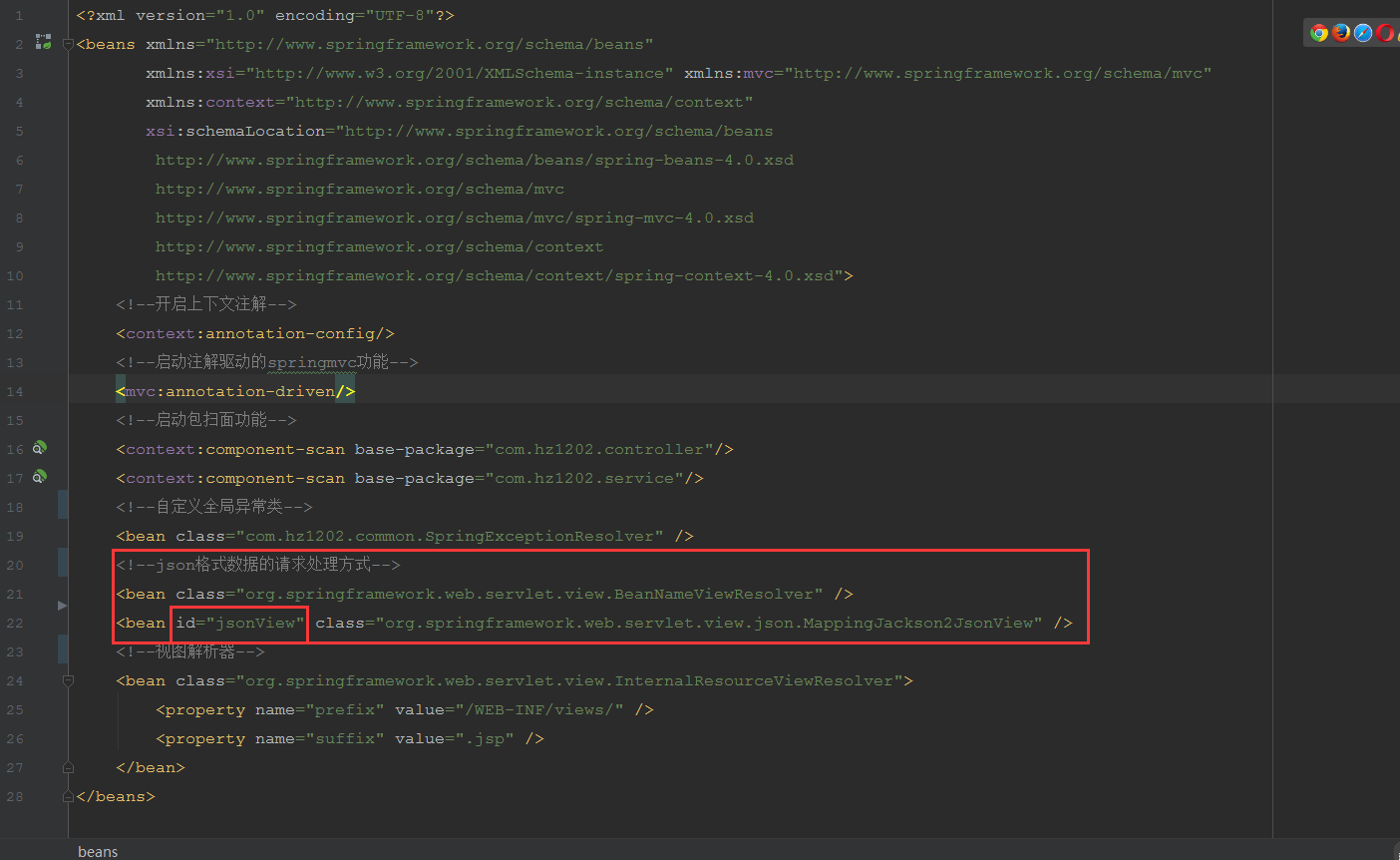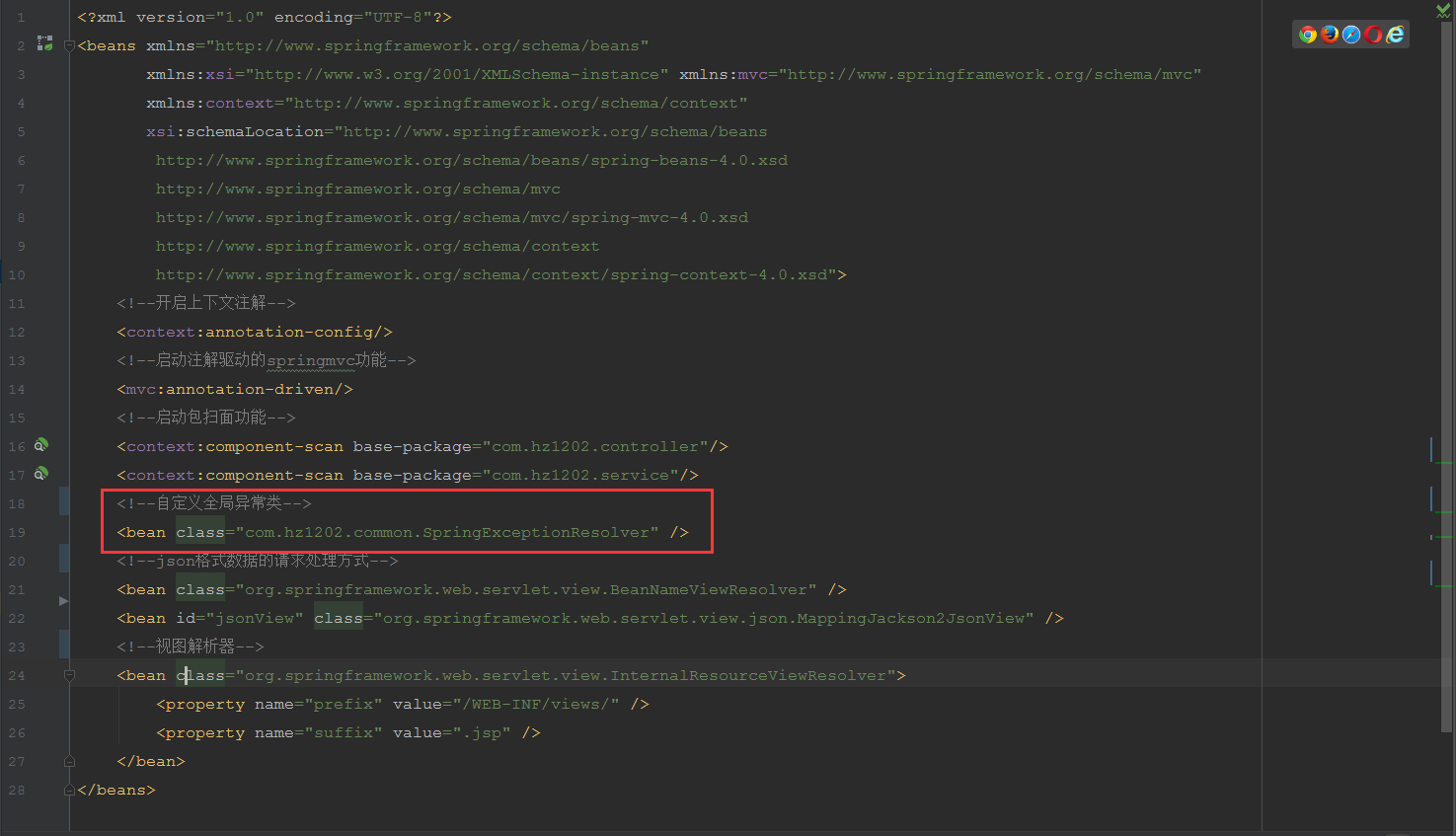1. When the interface returns json data, there should be return formats and fields in the system. First, define the unified fields when json returns.
① It is recommended to use lombok's @Getter and @Setter annotations in the idea. After using this annotation, you don't need to write the get/set method, it will be automatically generated to avoid frequent modification of the method after modifying the field and reducing the efficiency of the opening method
②Sometimes the returned json data does not contain data, or the data is NULL, this field is not necessary, in this case, we can use class annotation
@JsonInclude(Include.NON_NULL)
To exclude NULL fields, so that the returned data does not contain NULL fields
package com.hz1202.common;
import com.fasterxml.jackson.annotation.JsonIgnore;
import lombok.Getter;
import com.fasterxml.jackson.annotation.JsonInclude;
import com.fasterxml.jackson.annotation.JsonInclude.Include;
import java.io.Serializable;
import java.util.HashMap;
import java.util.Map;
@Getter
@JsonInclude(Include.NON_NULL)
public class JsonData<T> implements Serializable {
private int status;
private String msg;
private T data;
private JsonData(int status) {
this.status = status;
}
private JsonData(String msg) {
this.msg = msg;
}
private JsonData(T data) {
this.data = data;
}
private JsonData(int status, String msg) {
this.status = status;
this.msg = msg;
}
private JsonData(int status, T data) {
this.status = status;
this.data = data;
}
private JsonData(int status, String msg, T data) {
this.status = status;
this.msg = msg;
this.data = data;
}
//使之不在json返回结果当中
@JsonIgnore
public boolean isSuccess() {
return this.status == 1;
}
public static JsonData createSuccess() {
return new JsonData(1);
}
public static JsonData createSuccess(String msg) {
return new JsonData(1, msg);
}
public static <T> JsonData<T> createSuccess(T data) {
return new JsonData(1, data);
}
public static <T> JsonData<T> createSuccess(String msg, T data) {
return new JsonData(1, msg, data);
}
public static JsonData createError() {
return new JsonData(1);
}
public static JsonData createError(String msg) {
return new JsonData(0, msg);
}
public static JsonData createError(int status, String msg) {
return new JsonData(status, msg);
}
public Map<String, Object> toMap() {
HashMap<String, Object> result = new HashMap<String, Object>();
result.put("status", status);
result.put("msg", msg);
if(data != null){
result.put("data", data);
}
return result;
}
}
2. Define our own custom exception. Custom exceptions need to inherit RunTimeException and override the following methods. The shortcut key for the idea override method is "ctrl+o"
package com.hz1202.exception;
public class PermissionException extends RuntimeException{
public PermissionException() {
super();
}
public PermissionException(String message) {
super(message);
}
public PermissionException(String message, Throwable cause) {
super(message, cause);
}
public PermissionException(Throwable cause) {
super(cause);
}
protected PermissionException(String message, Throwable cause, boolean enableSuppression, boolean writableStackTrace) {
super(message, cause, enableSuppression, writableStackTrace);
}
}
3. Customize the global exception class
1. Implement the HandlerExceptionResolver interface
② "jsonView" in the code is the id of the bean configured to process json in the spring-mvc configuration file spring-mvc.xml
package com.hz1202.common;
import com.hz1202.exception.PermissionException;
import lombok.extern.slf4j.Slf4j;
import org.springframework.web.servlet.HandlerExceptionResolver;
import org.springframework.web.servlet.ModelAndView;
import javax.servlet.http.HttpServletRequest;
import javax.servlet.http.HttpServletResponse;
@Slf4j
public class SpringExceptionResolver implements HandlerExceptionResolver{
public ModelAndView resolveException(HttpServletRequest request, HttpServletResponse response, Object o, Exception e) {
String url = request.getRequestURL().toString();
ModelAndView mv;
String defaultMsg = "System error";
//定义文本请求和页面请求
//json请求
if(url.endsWith(".json")){
//判断是否是我们自定义的异常
if(e instanceof PermissionException){
//创建异常返回信息
JsonData jsonData = JsonData.createError(e.getMessage());
//封装异常信息
mv = new ModelAndView("jsonView",jsonData.toMap());
}else{
log.error("unkwon json exception={},url={},",e,url);
JsonData jsonData = JsonData.createError(defaultMsg);
mv = new ModelAndView("jsonView",jsonData.toMap());
}
}else if(url.endsWith(".page")){
//页面请求
log.error("unkwon page exception={},url={},",e,url);
JsonData jsonData = JsonData.createError(defaultMsg);
mv = new ModelAndView("exception",jsonData.toMap());
}else{
log.error("unkwon exception={},url={},",e,url);
JsonData jsonData = JsonData.createError(defaultMsg);
mv = new ModelAndView("jsonView",jsonData.toMap());
}
return mv;
}
}

3. Configure global exception handling in spring-mvc.xml
